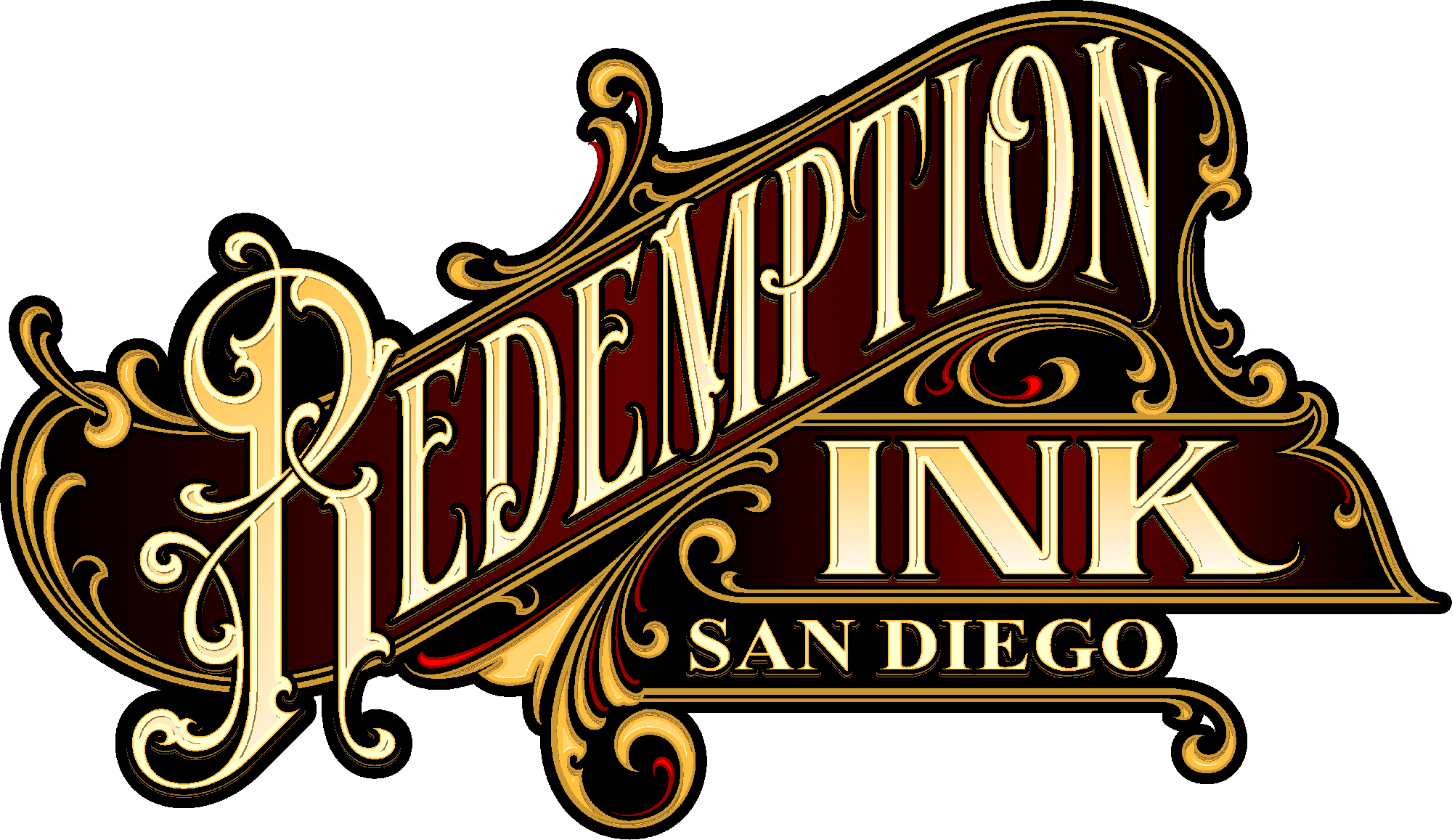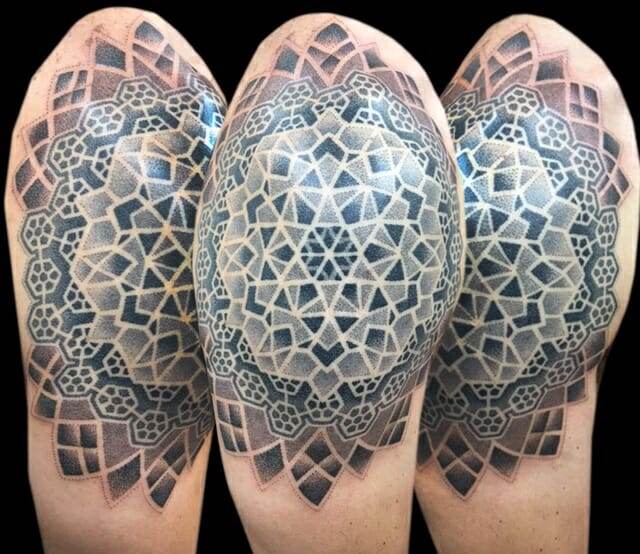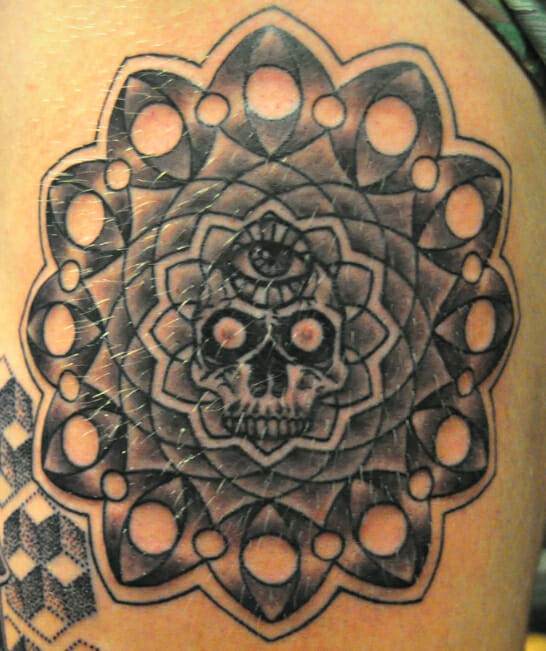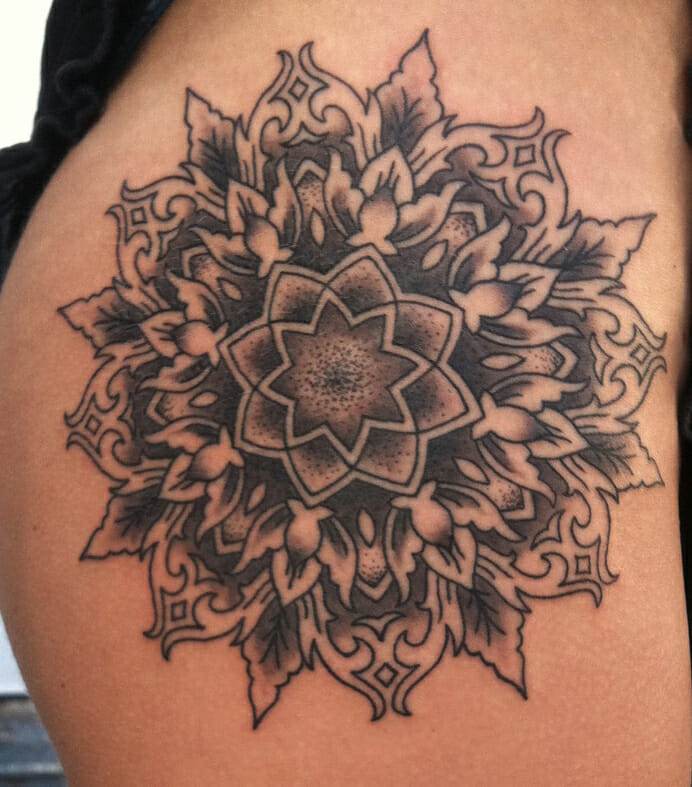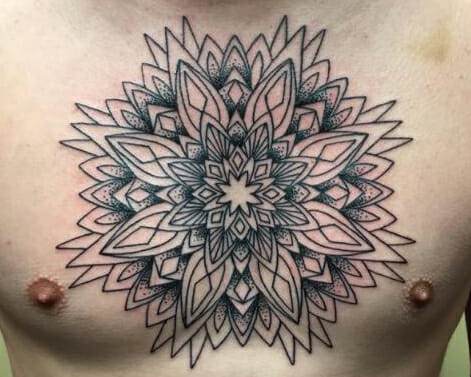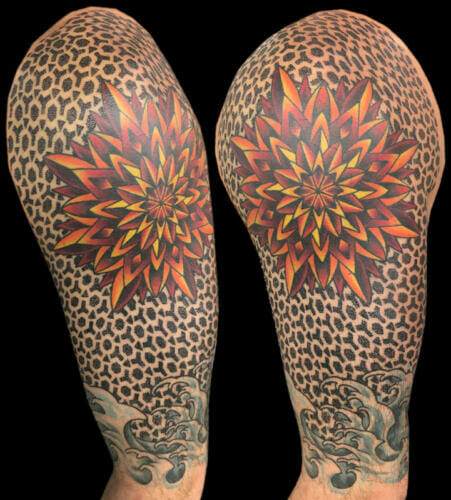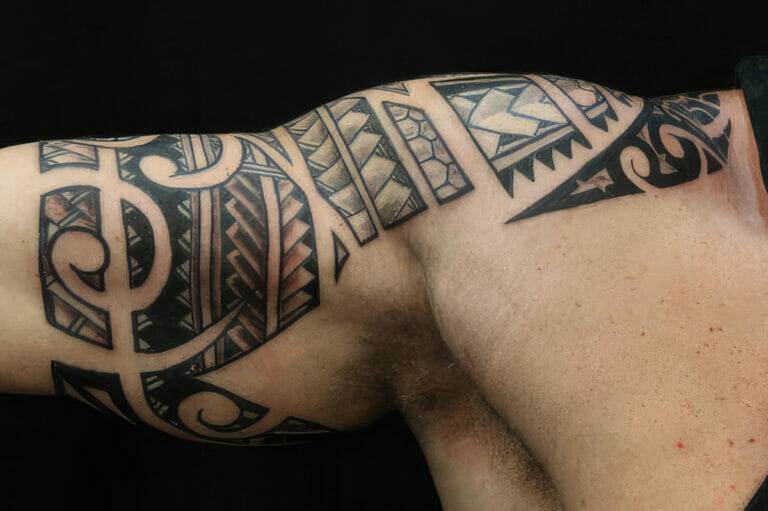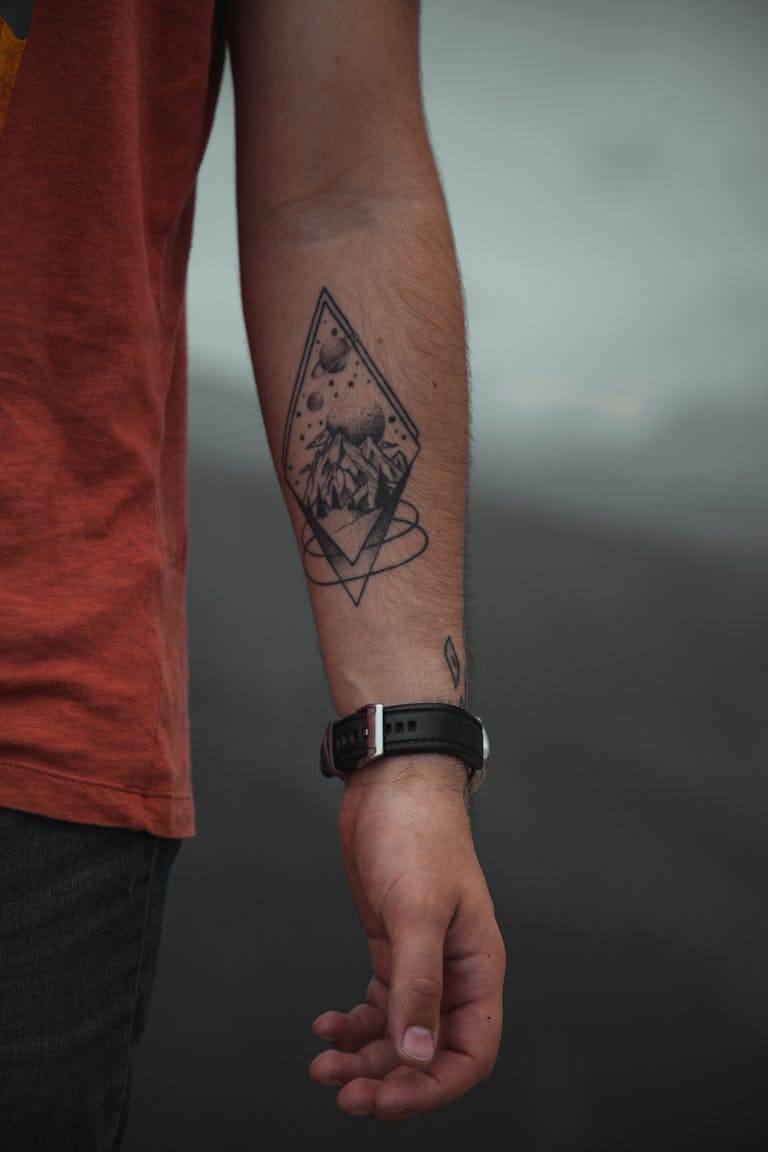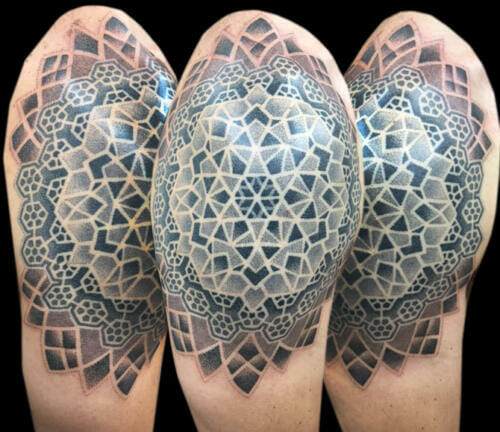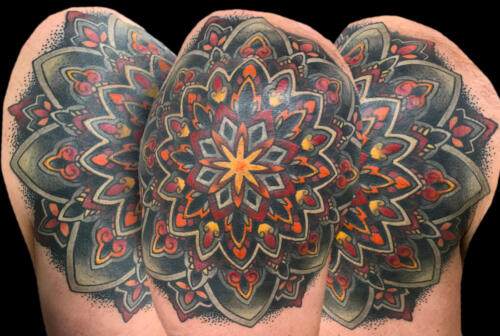
A brief overview of geometric and mandala tattoos
Geometric tattoos refer to a distinct style of tattooing that focuses on precise mathematical shapes and patterns. These tattoos often incorporate elements such as lines, circles, triangles, and squares to create intricate and symmetrical designs. On the other hand, mandala tattoos are based on the concept of mandalas, which are spiritual and ritual symbols in Indian religions. These tattoos typically feature a central circle surrounded by various geometric patterns and symbols.
The significance and popularity of these tattoo styles
Geometric and mandala tattoos have gained significant popularity in recent years due to their visually appealing and highly symmetrical designs. These tattoos often hold deep personal meanings for individuals, as they can represent balance, harmony, and interconnectedness. The geometric patterns are seen as a symbol of order and structure, while mandalas are believed to have a meditative and calming effect.
These tattoo styles also offer a wide range of design possibilities, enabling individuals to create unique and personalized tattoos. Geometric tattoos can be adapted to fit different body parts and sizes, making them versatile and suitable for various preferences. Mandala tattoos, on the other hand, can be customized with different colors and elements to add personal symbolism and significance.
In conclusion, geometric and mandala tattoos are not only visually captivating but also hold deep significance for individuals. Their popularity stems from the ability to create personalized and meaningful designs that represent harmony, balance, and spiritual connections. Whether it’s the precision of geometric shapes or the spirituality of mandalas, these tattoo styles continue to captivate tattoo enthusiasts around the world.
Basic Elements of Geometric and Mandala Tattoos
Understanding the use of lines and shapes in geometric tattoos
Geometric tattoos are a specific style of tattooing that focuses on precise mathematical shapes and patterns. The key elements in these tattoos are lines, circles, triangles, and squares, which are used to create intricate and symmetrical designs. The precision and clean lines of geometric tattoos make them visually appealing and popular among tattoo enthusiasts.
These tattoos often hold personal meanings for individuals, as they can represent balance, harmony, and interconnectedness. The geometric patterns are seen as a symbol of order and structure, reflecting the desire for stability and balance in one’s life. The use of straight lines and precise shapes also conveys a sense of control and discipline.
The symbolism and patterns of mandala tattoos
Mandala tattoos are based on the concept of mandalas, which are spiritual and ritual symbols originating from Indian religions. The main feature of a mandala tattoo is a central circle surrounded by various geometric patterns and symbols. These tattoos are highly symbolic and often represent the universe, unity, and the notion of the self.
The concentric circles and intricate patterns of mandala tattoos have a meditative and calming effect. Many individuals choose to get mandala tattoos as a way to find inner peace, and the repetitive nature of creating mandalas can be a form of meditation in itself. The patterns within mandala tattoos also often have specific meanings, such as lotus flowers representing enlightenment, or arrows symbolizing protection.
In conclusion, both geometric and mandala tattoos offer unique styles and symbolism. Geometric tattoos focus on precise mathematical shapes, representing order and structure, while mandala tattoos have a deeper spiritual meaning and promote tranquility. These tattoo styles continue to be popular due to their visually captivating designs and the personal significance they hold for individuals.
Geometric Tattoo Designs
Exploring various geometric tattoo designs and their meanings
Geometric tattoos are known for their precise mathematical shapes and patterns, which create visually appealing and symmetrical designs. Here are some popular geometric tattoo designs and their meanings:
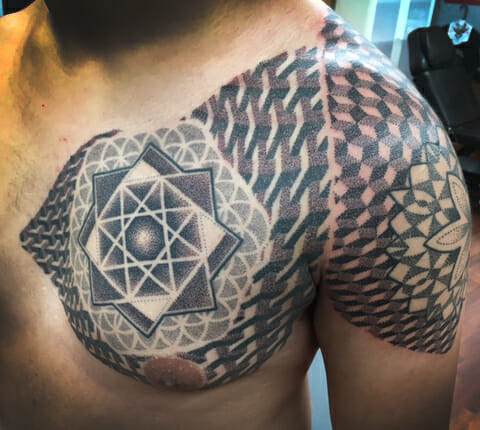
- Sacred Geometry: This design incorporates sacred geometric shapes, such as the Flower of Life, Metatron’s Cube, or the Sri Yantra. These symbols represent the interconnectedness of all things and the underlying patterns in the universe.
- Geometric Animals: Animals, such as wolves, lions, and birds, can be depicted using geometric shapes. These tattoos combine the symbolism of the animal with the precision and structure of geometric designs.
- Mandala-inspired Geometric Tattoos: These tattoos combine the patterns and symbolism of mandalas with geometric shapes. They often feature a central circle surrounded by intricate geometric patterns, creating a harmonious and balanced design.
- Geometric Elements: Simple geometric shapes, such as triangles, squares, or circles, can be used individually or combined to create unique designs. Each shape carries its own symbolism, such as triangles representing strength and stability or circles signifying unity and wholeness.
Incorporating animals, nature, and objects in geometric tattoos
Geometric tattoos can be enhanced by incorporating elements from nature, animals, or objects. Here are some examples:
- Geometric Animal Portraits: Portraits of animals, such as wolves or elephants, can be created using geometric shapes. This combination adds depth and symbolism to the tattoo design.
- Floral Geometric Tattoos: Geometric patterns can be integrated with flowers, such as roses or lotus blossoms, to create a delicate and visually striking design that symbolizes beauty, growth, or spirituality.
- Geometric Landscapes: A landscape scene, such as mountains or a forest, can be depicted using geometric shapes. This incorporation of nature adds a sense of serenity and connection to the natural world.
- Geometric Objects: Everyday objects, such as keys, clocks, or compasses, can be represented using geometric shapes. These designs can have personal meanings, representing time, direction, or unlocking new opportunities.
In summary, geometric tattoos offer a wide range of designs and meanings. From sacred geometry to incorporating animals and objects, these tattoos allow individuals to express their personal beliefs, interests, and connection to the world around them. The precision and clean lines of geometric tattoos continue to captivate tattoo enthusiasts due to their visual appeal and the symbolism they carry.
Mandala Tattoo Designs
Different styles and variations of mandala tattoos
Mandala tattoos are intricate and captivating designs that hold deep symbolism and meaning. They originate from ancient cultures and have gained popularity in the tattoo world for their spiritual significance and aesthetic appeal. Here are different styles and variations of mandala tattoos:
- Traditional Mandalas: These tattoos feature intricate geometric patterns arranged in a circular shape, with a central point representing unity and wholeness. Traditional mandalas often incorporate symmetrical designs and repetitive patterns to create a sense of balance and harmony.
- Dotwork Mandala Tattoos: Dotwork mandalas utilize the technique of creating intricate designs using small dots. This style adds depth and texture to the tattoo, giving it a unique and mesmerizing appearance.
- Watercolor Mandala Tattoos: Watercolor mandalas incorporate vibrant and flowing colors, similar to a watercolor painting. These tattoos are known for their dreamy and ethereal look, adding a touch of softness and fluidity to the design.
- Black and Grey Mandala Tattoos: Black and grey mandalas utilize shades of black and grey ink to create a more subtle and classic look. This style focuses on the intricate details and shading, resulting in a stunning and sophisticated design.
The spiritual and cultural symbolism behind mandalas
Mandala tattoos hold spiritual and cultural symbolism that stems from their rich history. Here are some meanings associated with mandalas:
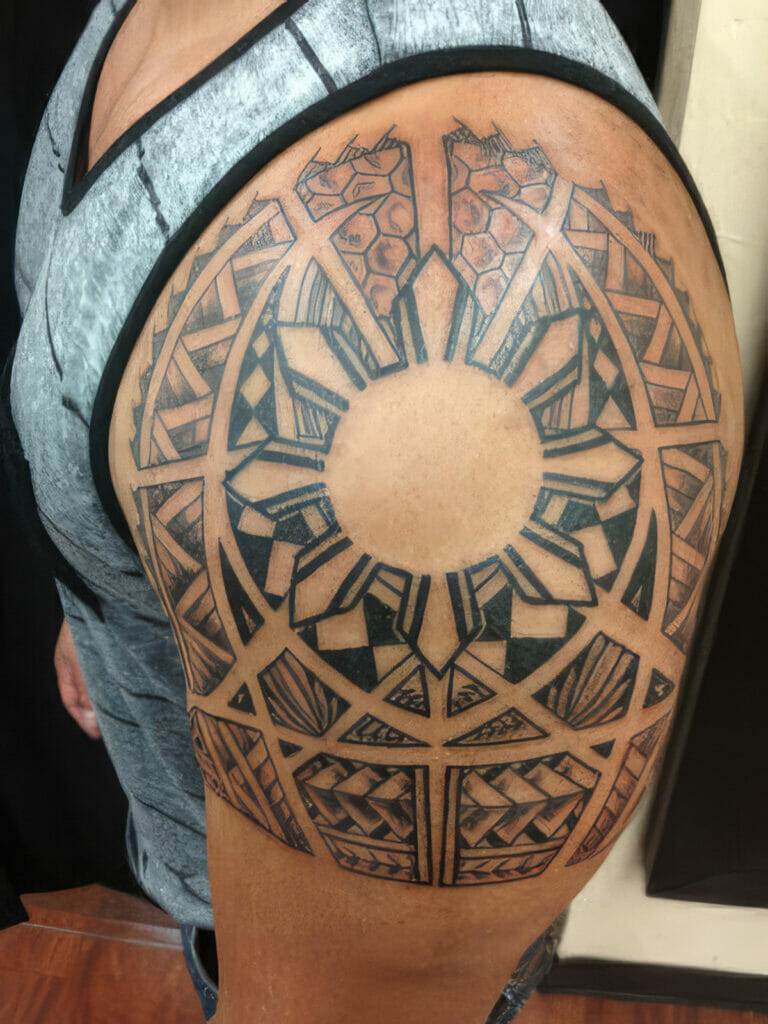
- Unity and Wholeness: Mandala tattoos symbolize unity and wholeness, representing the interconnectedness of all things. They depict the balance between the inner and outer self and the harmony between different aspects of life.
- Spirituality and Enlightenment: Mandalas are often associated with spiritual practices, such as meditation and mindfulness. They serve as a tool for achieving a state of enlightenment and inner peace.
- Protection and Guidance: Mandalas can also act as a protective symbol, providing strength and guidance to the wearer. They are believed to ward off negative energy and bring positive vibrations.
- Personal Growth and Transformation: Mandalas represent personal growth and transformation. They symbolize the journey to self-discovery and the continuous cycle of rebirth and renewal.
Mandala tattoos not only showcase stunning designs but also carry profound meanings. Whether it’s the traditional style, dotwork technique, or vibrant watercolor approach, mandala tattoos serve as powerful reminders of the inner journey towards enlightenment and unity.
Placement and Size Considerations
Choosing the right body placement for geometric and mandala tattoos
When deciding on the placement of your geometric or mandala tattoo, it is important to consider the shape and size of the design. Some popular placement options include the arm, back, thigh, and chest. Here are a few factors to consider:
- Arm: The upper arm, forearm, or wrist can be great locations for smaller mandala or geometric tattoos. The circular shape of a mandala can complement the natural curves of the arm, while smaller geometric designs can fit nicely on the wrist or forearm.
- Back: The back provides a larger canvas for more intricate and detailed mandalas or geometric designs. This placement allows for a bold and eye-catching tattoo that can be easily displayed or covered up depending on your preference.
- Thigh: The thigh is another popular placement option for mandala tattoos. This area provides ample space for larger designs and allows for a symmetrical placement that can enhance the overall aesthetic.
- Chest: The chest is a powerful and meaningful placement option for both mandala and geometric tattoos. This area is commonly associated with strength and protection, making it a fitting choice for these symbolic tattoo designs.
Determining the appropriate size for maximum impact
The size of your geometric or mandala tattoo will depend on personal preference, placement, and the level of detail you desire. Here are some considerations when determining the appropriate size for maximum impact:
- Placement: The size of your tattoo should be proportional to the placement area. Smaller designs work well on the wrist or forearm, while larger designs can be showcased on the back or thigh.
- Detail: Intricate and highly detailed designs typically require a larger size to fully capture all the elements. If you want to incorporate intricate patterns and shading, a larger size might be necessary to achieve the desired level of detail.
- Visibility: Consider whether you want your tattoo to be easily visible or more discreet. Smaller sizes can be more subtle and easily concealable, while larger sizes can make a bolder statement.
- Artist’s expertise: Consult with your tattoo artist to discuss the appropriate size based on their expertise and experience. They can provide valuable insights and recommendations based on the design and placement.
Remember, deciding on the placement and size of your geometric or mandala tattoo is a personal choice. Take the time to carefully consider these factors to ensure that your tattoo reflects your desired aesthetic and holds the maximum impact.
